Are you considering how many wine grape vines per acre? One crucial aspect of grape cultivation is determining the optimal vine density per acre. The number of wine grape vines per acre plays a significant role in vineyard management, grape quality, and overall productivity.
In this comprehensive guide, we will delve into the intricacies of vine spacing and explore the factors that influence this critical decision. Whether you’re a seasoned viticulturist or a budding wine enthusiast, understanding the ideal vine density will help you make informed choices for your vineyard.
So, let’s dive in and uncover the secrets to achieving the perfect balance of vine spacing and grapevine success.
How Many Wines Grape Vines Per Acre?
The number of wine grape vines per acre can vary depending on various factors such as grape variety, vine spacing, trellising system, and regional practices. However, a common range for planting wine grape vines per acre is between 400 to 1,200 vines. The specific vine density within this range depends on factors like vine vigor, desired yield, and local growing conditions.
The amount of other rows’ shading of neighboring rows will increase with row proximity, reducing the amount of sun exposure for all of the grape plants. The strength of the grape vine itself determines how far apart the vines are spaced.

Less vigorous grape vines are placed closer together (4 feet apart), whereas more vigorous vines require more space (often 6 feet). However, regardless of vigor, the majority of commercial vineyards today push their vines to a height of 4 feet or more to increase production. There will be 1089 vines per acre if rows are spaced 10 feet apart and vines are 4 feet apart.
The rows are substantially closer together in important wine areas and in warmer climates. Since grapes usually mature throughout the year, solar exposure is not as important in determining row spacing as it is in the North.
Here’s an example of a table that shows the number of wine grape vines per acre based on different spacing configurations:
| Spacing Configuration | Number of Vines per Acre |
| 6 feet x 6 feet | 1,210-1,452 |
| 7 feet x 7 feet | 888-1,210 |
| 8 feet x 8 feet | 680-907 |
| 9 feet x 9 feet | 537-809 |
| 10 feet x 10 feet | 435-653 |
| 11 feet x 11 feet | 360-542 |
| 12 feet x 12 feet | 302-453 |
The Different Types of Wine Grapes and Their Yield Expectations
There are numerous types of wine grapes, each with its own characteristics and yield expectations. Here are some common wine grape varieties and their general yield ranges:
- Cabernet Sauvignon: A popular red grape variety known for its rich flavors and tannins. It typically yields around 2-4 tons per acre.
- Chardonnay: A versatile white grape variety used for producing both still and sparkling wines. Yields can range from 2-5 tons per acre.
- Merlot: Another widely planted red grape variety known for its smoothness and approachable flavors. It generally yields around 2-4 tons per acre.
- Pinot Noir: This delicate red grape variety is challenging to grow but highly sought after for its complex flavors. Yields can vary significantly, typically ranging from 1.5-3 tons per acre.
- Sauvignon Blanc: A refreshing white grape variety with vibrant acidity and tropical fruit flavors. Yields typically range from 2-4 tons per acre.
- Syrah/Shiraz: This red grape variety produces bold and spicy wines. Yields can vary, generally ranging from 2-4 tons per acre.
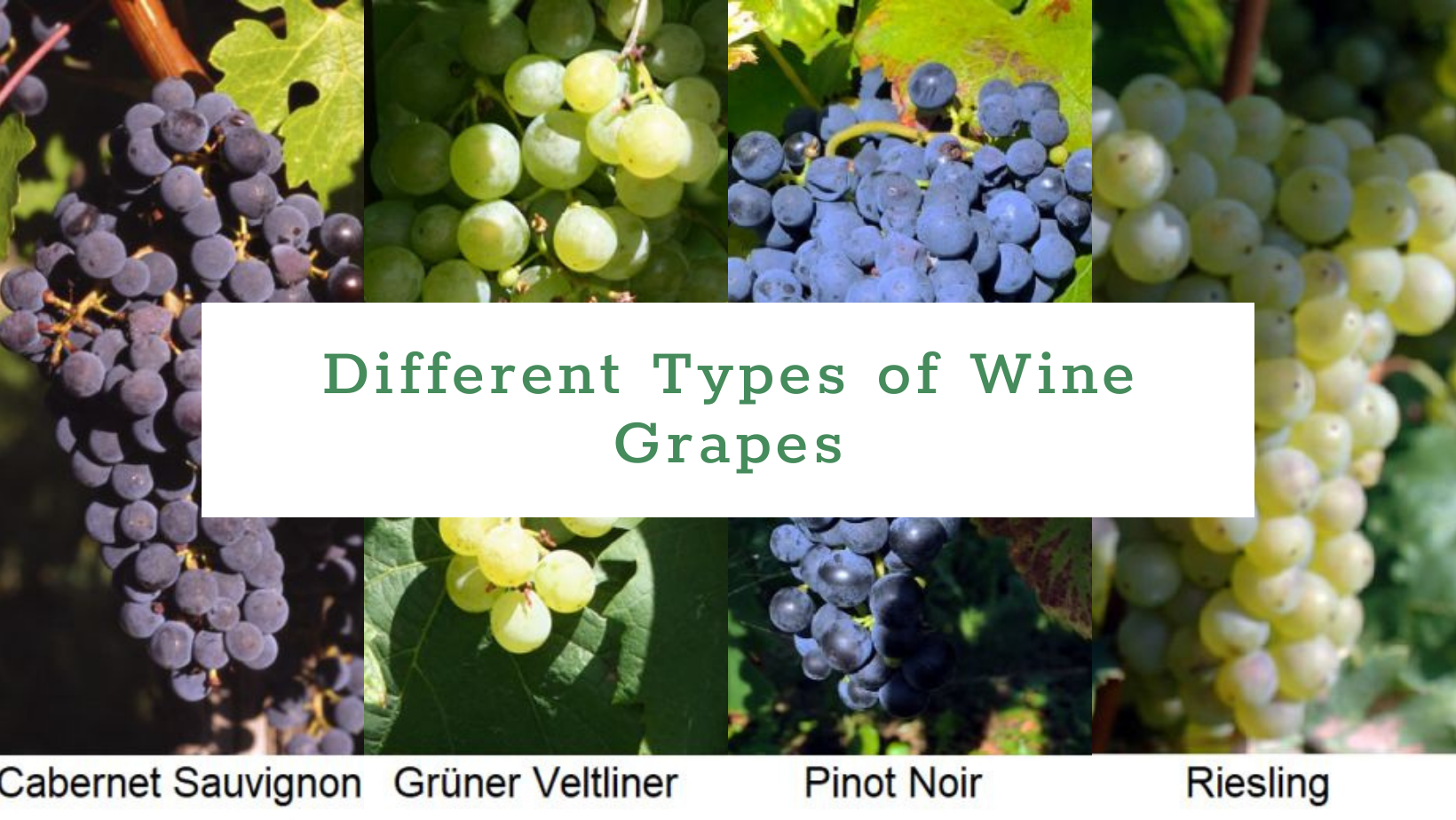
It’s important to note that these yield expectations are approximate and can vary depending on factors such as vine age, vineyard management practices, growing conditions, and the specific wine region. Additionally, different winemakers may have varying preferences for desired yields to achieve the desired quality and style of the wines they produce.
You can also like:
- How Many Calories Are In A Bottle Of Pinot Noir?
- Does Chardonnay Go Bad? Expert Advice for Wine Storage
- Do You Chill Sauvignon Blanc? The Definitive Guide
Consulting with local viticulture experts and considering site-specific conditions will provide more accurate information on yield expectations for specific wine grape varieties in a particular region.
Factors to Consider When Planting Wine Grapes
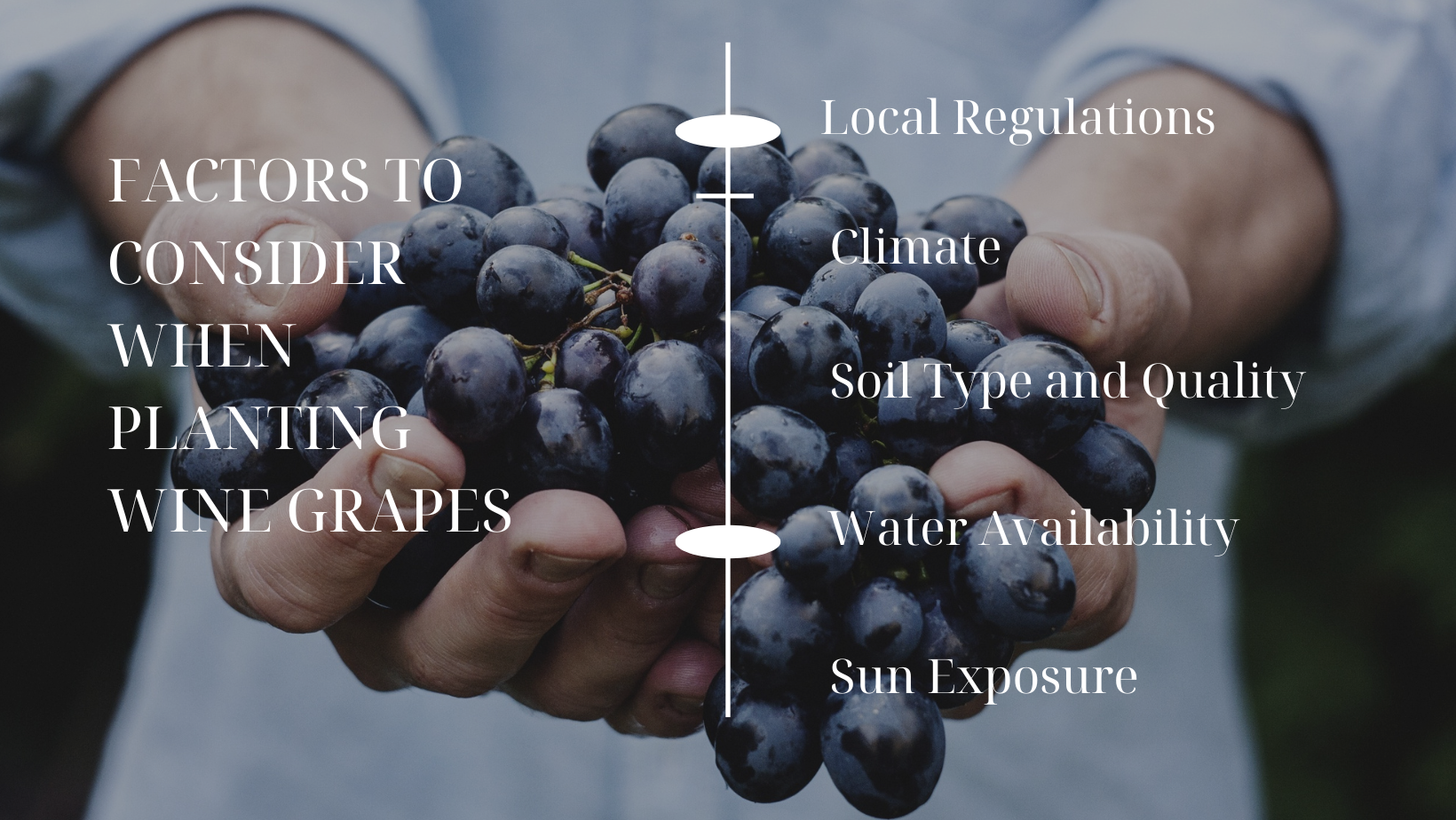
When planting wine grapes, several factors should be considered to ensure successful growth and optimal grape production. Here are some key factors to consider:
1. Climate
Wine grapes have specific climatic requirements. Consider the average temperatures, rainfall patterns, and overall climate suitability for the grape variety you intend to plant. Ensure that the climate matches the grape’s needs for ripening and flavor development.

2. Soil Type and Quality
Soil composition and quality play a crucial role in the health and productivity of wine grape vines. Assess factors such as soil drainage, fertility, pH levels, and nutrient content. Different grape varieties have preferences for specific soil types, so choose a variety that is well-suited to the soil conditions on your site.
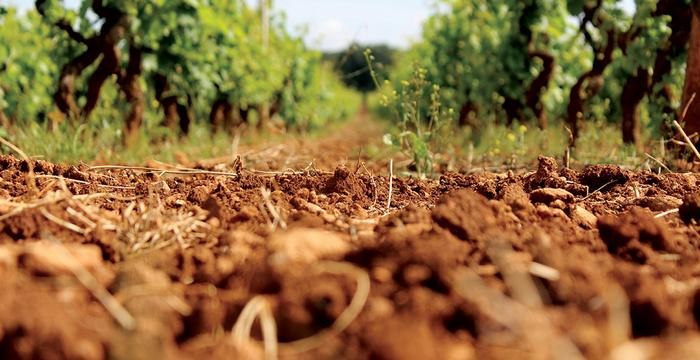
3. Sun Exposure
Wine grapes require sufficient sunlight for photosynthesis and ripening. Ensure that the vineyard site receives an appropriate amount of sunlight throughout the day. Consider factors such as the angle and orientation of the vineyard rows, as well as any potential shading from nearby structures or vegetation.
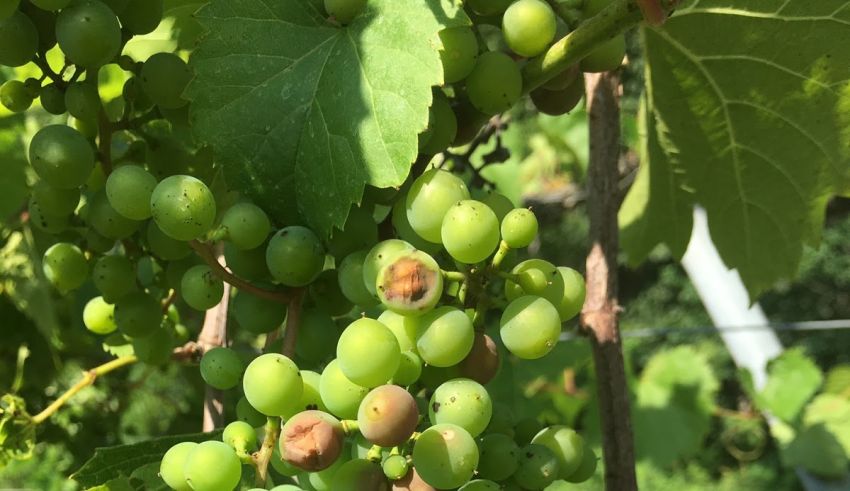
4. Vineyard Layout and Trellising
Plan the layout of the vineyard, including row spacing, vine spacing, and trellising systems. Proper spacing allows for air circulation, sunlight penetration, and vine access for maintenance. Choose an appropriate trellising system that suits the grape variety and supports vine growth and fruit development.
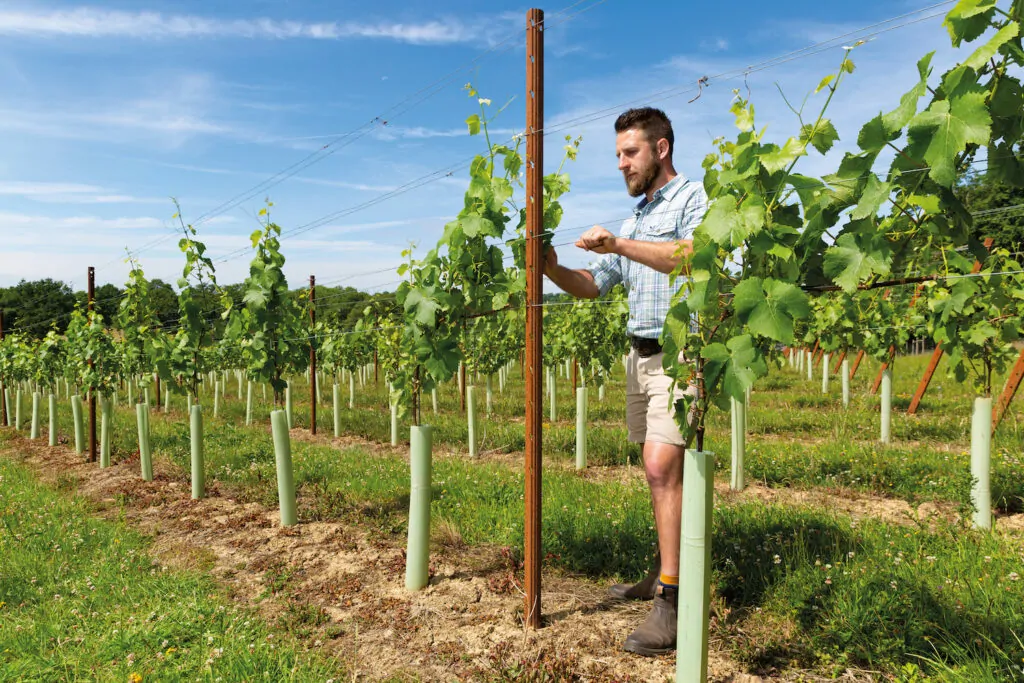
5. Disease Resistance
Different grape varieties have varying levels of disease resistance. Research the susceptibility of grape varieties to common vineyard diseases and pests in your region. Choosing disease-resistant varieties or implementing suitable pest control measures can help maintain vineyard health and reduce the need for excessive chemical treatments.
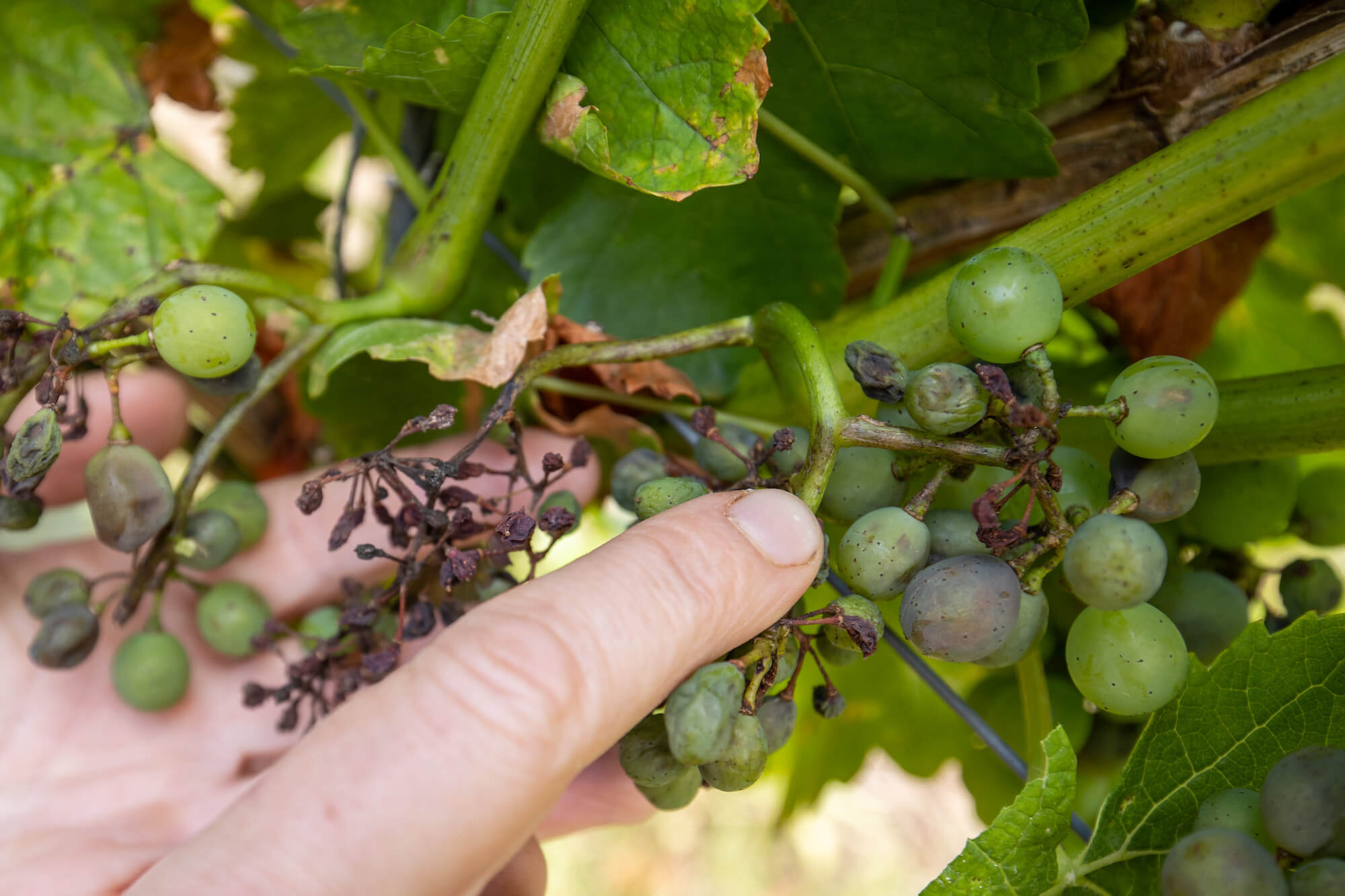
6. Water Availability and Irrigation
Adequate water supply is crucial for grapevine growth, especially during critical stages such as bud break, flowering, and fruit development. Consider the availability of water sources and the need for irrigation systems to supplement rainfall. Efficient irrigation practices can optimize water usage and promote healthy vine growth.
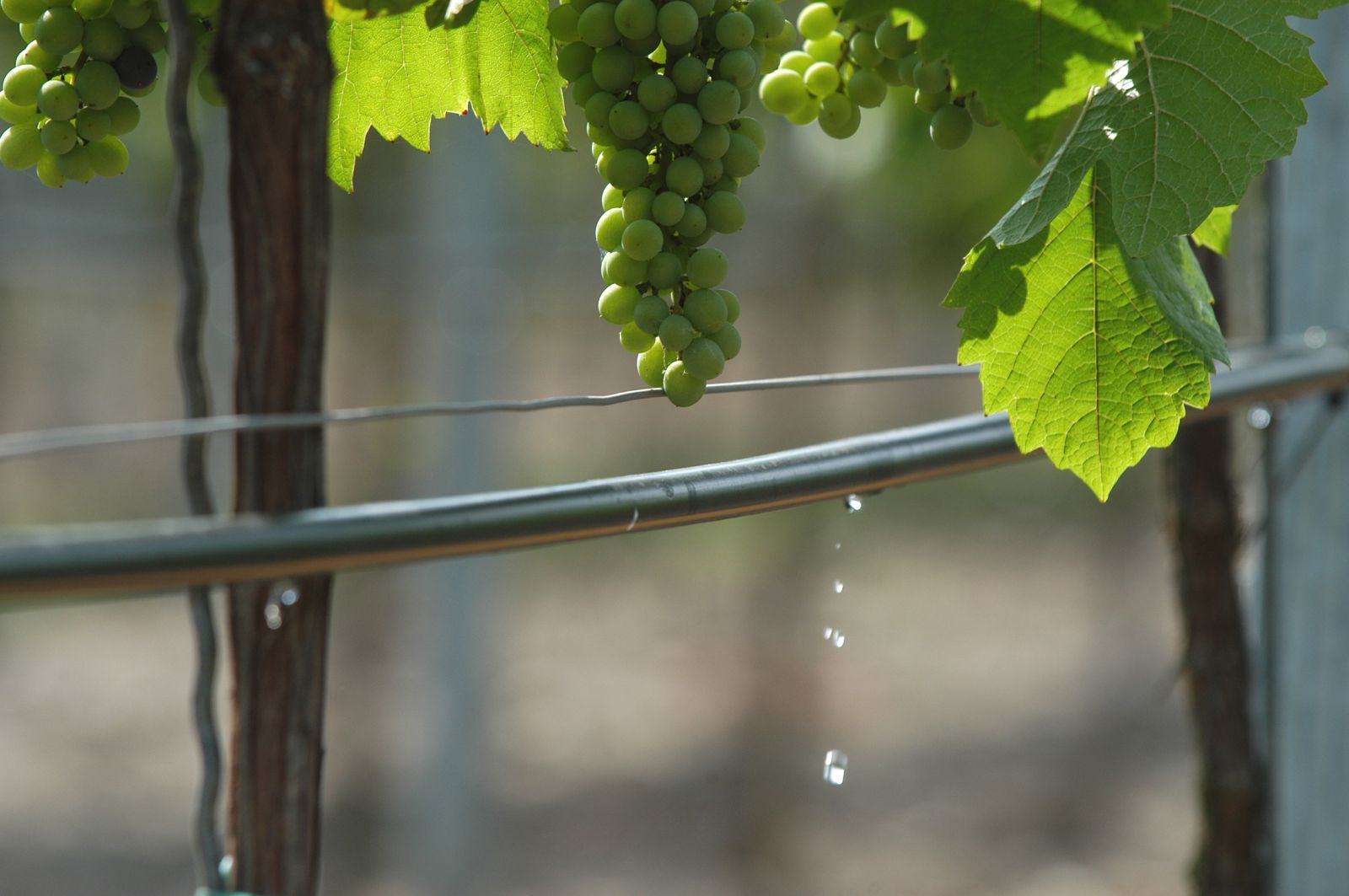
7. Local Regulations and Varietal Suitability
Check local regulations and zoning restrictions related to vineyard establishment and grape varieties permitted in your area. Some regions have specific restrictions or recommendations based on local terroir and historical success with certain grape varieties.
Calculating How Many Vines per Acre You Need To Plant
Calculating the number of vines per acre involves considering several factors, including vine spacing, row spacing, and the desired vine density. Here’s a step-by-step process to help you calculate the number of vines per acre:
- Determine vine spacing: Vine spacing refers to the distance between individual vines within a row. It is typically measured in feet. Consider the vine spacing recommendation for the specific grape variety you plan to plant. Common vine spacing ranges from 4 to 8 feet, depending on the vigor of the variety and the trellising system used.
- Determine row spacing: Row spacing refers to the distance between the rows of vines. It is also measured in feet. Row spacing can vary depending on vineyard management practices and machinery requirements. Common row spacing ranges from 6 to 12 feet.
- Calculate the number of vines per row: Divide the row spacing by the vine spacing. For example, if your row spacing is 8 feet and vine spacing is 6 feet, you would have approximately 1.33 (8 divided by 6) vines per row.
- Determine the number of rows per acre: Divide 43,560 (the number of square feet in an acre) by the row spacing. For example, if your row spacing is 8 feet, you would have approximately 5,445 (43,560 divided by 8) rows per acre.
- Calculate the total number of vines per acre: Multiply the number of vines per row (step 3) by the number of rows per acre (step 4). Using the previous example, multiplying 1.33 (vines per row) by 5,445 (rows per acre) gives you approximately 7,246 vines per acre.
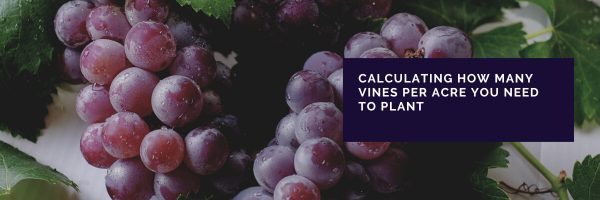
The Right Time of Year to Plant Your Wine Grapes
The right time of year to plant wine grapes depends on various factors, including your climate, grape variety, and local growing conditions. Here are some general guidelines to consider:
- Dormant Season: In many wine-growing regions, the dormant season is considered the optimal time for planting grapevines. This typically occurs during late fall, winter, or early spring when the vines are in their dormant state. Planting during this period allows the vines to establish their root systems before the onset of vigorous growth in the spring.
- Climate Considerations: Consider your specific climate and local weather patterns. Avoid planting during extreme temperature conditions, such as the peak of summer heat or harsh winter freezes. Aim for milder periods when the soil is workable and conducive to root development.
- Frost Risk: If your region is prone to late spring frosts, it’s important to time your planting accordingly. Planting too early can expose young vines to the risk of frost damage. Consult local agricultural extension services or viticulture experts to determine the best timing for planting in frost-prone areas.
- Grapevine Availability: Availability of grapevines can also influence the timing of planting. Nurseries and vine suppliers may have specific seasons when they offer grapevine stock for purchase. It’s advisable to plan ahead and secure your grapevine supply in advance.
- Regional Practices: Consider the common practices and traditions followed by local vineyards in your area. Talk to neighboring grape growers or join local viticultural associations to gather insights on the preferred planting times for your specific wine grape varieties.
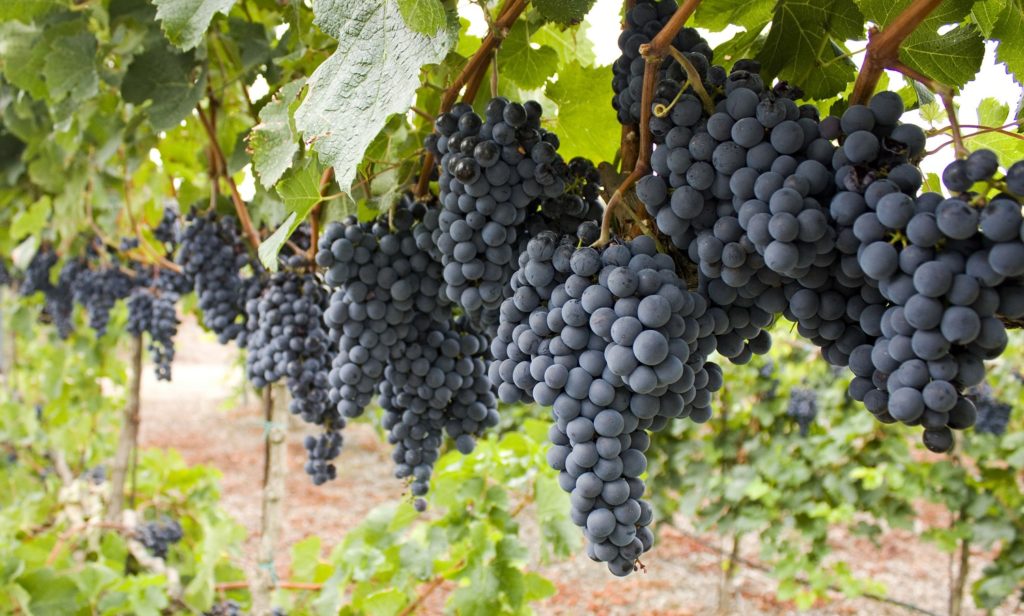
Tips for Maximizing Your Yields and Quality of Wine Produced From Each Vine
Maximizing yields and quality of wine produced from each vine requires careful vineyard management practices. Here are some tips to help you achieve optimal results:
- Pruning and Training: Proper pruning and training techniques are essential for vine health and fruit production. Prune vines during the dormant season to remove excess growth, promote air circulation, and manage vine vigor. Use appropriate training systems, such as trellising or espalier, to support vine growth and ensure proper exposure to sunlight.
- Canopy Management: Manage the vine canopy to balance fruit development and sunlight exposure. Prune or thin the canopy to optimize light penetration and air movement, reducing the risk of diseases and improving grape ripening. Remove excessive foliage that shades the grape clusters and restricts airflow.
- Irrigation and Water Management: Provide adequate and consistent water supply to the vines, especially during critical growth stages. Monitor soil moisture levels and adjust irrigation accordingly. Avoid overwatering or underwatering, as both can impact grape quality and yields.
- Nutrient Management: Conduct soil tests to determine nutrient deficiencies or imbalances. Based on the results, implement appropriate fertilization strategies to ensure vines receive the necessary nutrients for healthy growth and fruit development. Work with a viticulturist or agricultural expert to develop a tailored nutrient management plan.
- Pest and Disease Control: Implement integrated pest management (IPM) practices to minimize the impact of pests and diseases on vine health and grape quality. Monitor vineyards regularly, use preventive measures such as netting or bird deterrents, and consider environmentally friendly pest control methods.
- Harvest Timing: Optimal harvest timing is crucial for achieving the desired balance of flavors, acidity, and sugar levels in the grapes. Regularly sample and analyze grape maturity to determine the ideal harvest window for each grape variety. Harvesting too early or too late can impact the quality of the resulting wine.
- Winemaking Techniques: Pay attention to winemaking techniques to preserve the flavors and quality of the grapes. Maintain proper fermentation temperatures, manage maceration times, and use suitable yeast strains to bring out the desired characteristics of the grapes.
- Vineyard Monitoring and Record Keeping: Regularly monitor vineyard conditions, record observations, and track vine health, yields, and quality metrics over time. This data will help you make informed decisions and identify areas for improvement in subsequent seasons.
Processing to Produce Wine Grapes
The process of producing wine grapes involves several stages, from selecting the right grape varieties to harvesting fully ripened grapes. Here’s a general overview of the process:
- Grape Variety Selection: Choose grape varieties that are suitable for your climate, soil conditions, and desired wine style. Consider factors like disease resistance, flavor profiles, and market demand.
- Site Selection and Preparation: Identify a suitable vineyard site with proper sunlight exposure, drainage, and soil quality. Prepare the land by clearing vegetation, testing the soil, and addressing any necessary amendments.
- Vineyard Establishment: Plant the grapevines in rows with appropriate spacing, considering factors such as vigor, trellising system, and irrigation requirements. Provide support structures like trellises or stakes for the vines to grow vertically.
- Vineyard Management: Implement regular vineyard management practices, including pruning, training, canopy management, fertilization, pest and disease control, and irrigation. Monitor vine health and adjust practices as needed throughout the growing season.
- Grape Development: Monitor grape development closely, paying attention to key stages such as bud break, flowering, fruit set, veraison (color change), and ripening. Adjust vineyard management techniques to optimize grape quality and ripening.
- Harvest: Determine the optimal harvest time based on grape sugar levels (Brix), acidity, pH, flavor development, and desired wine style. Handpick or mechanically harvest the grapes, ensuring careful handling to prevent damage.
- Grape Sorting and Crushing: Sort the harvested grapes to remove any undesirable fruit or debris. Crush the grapes to release the juice and pulp, typically using mechanical presses or by foot treading in traditional methods.
- Fermentation: Transfer the crushed grapes or juice to fermentation vessels, such as tanks or barrels. Add selected yeast strains to initiate fermentation, where sugars are converted into alcohol. Monitor temperature and other fermentation parameters.
- Aging and Maturation: After primary fermentation, the wine may undergo secondary fermentation (malolactic fermentation) and aging. Store the wine in appropriate containers, such as barrels or stainless steel tanks, for the desired period. Oak aging may also be employed for certain wine styles.
- Bottling and Cellaring: Once the wine has reached its desired maturity, it is bottled, sealed, and labeled. Store the bottles in a controlled environment, such as a cellar, to allow the wine to further develop and age.
- Distribution and Enjoyment: Finally, the wine is ready for distribution and consumption. It can be sold commercially or enjoyed personally, bringing pleasure to wine enthusiasts around the world.
Types of Grapes to Produce Wine
There are numerous grape varieties used for producing wine grapes around the world. The choice of grape variety depends on various factors, including the region’s climate, soil conditions, and desired wine style. Here are some popular grape varieties categorized by their primary use in winemaking:
- Red Wine Grapes:
- Cabernet Sauvignon: Known for its bold flavors, high tannins, and aging potential.
- Merlot: Offers a softer, fruit-forward profile with moderate tannins.
- Pinot Noir: Produces elegant and complex wines with moderate tannins and vibrant acidity.
- Syrah/Shiraz: Yields robust, full-bodied wines with rich fruit flavors and peppery notes.
- Malbec: Often used for blending or producing varietal wines with dark fruit flavors and robust tannins.
- Tempranillo: Mainly associated with Spanish wines, it features flavors of red fruit and spice.
- White Wine Grapes:
- Chardonnay: A versatile grape that produces a wide range of styles, from crisp and unoaked to rich and buttery.
- Sauvignon Blanc: Known for its vibrant acidity, citrus, and herbaceous flavors.
- Riesling: Offers a range of styles, from dry to sweet, with aromatic profiles and vibrant acidity.
- Pinot Gris/Grigio: Produces wines with a range of flavors from crisp and dry to rich and aromatic.
- Gewürztraminer: Known for its intense floral aromas, spiciness, and lychee flavors.
- Chenin Blanc: Capable of producing wines ranging from dry to sweet, with flavors of apple, honey, and floral notes.
- Rosé Wine Grapes:
- Grenache/Garnacha: Commonly used in rosé production, providing fruity and refreshing flavors.
- Sangiovese: Often used in rosé wines with bright red fruit flavors and crisp acidity.
- Cinsault: Known for its floral aromatics and delicate red fruit flavors in rosé wines.
- Sparkling Wine Grapes:
- Chardonnay: Frequently used in the production of sparkling wines, offering crispness and elegance.
- Pinot Noir: Provides structure and depth to sparkling wines, along with red fruit flavors.
- Pinot Meunier: Often used in Champagne blends for its fruity character and approachable flavors.
Here’s an example of a table showing the approximate number of acres required to produce wine grapes for each type of grape:
| Grape Variety | Approximate Acres per Ton | Approximate Feet per Vine |
| Cabernet Sauvignon | 1-1.5 | 6-8 |
| Merlot | 1-1.5 | 6-8 |
| Pinot Noir | 1-1.5 | 4-6 |
| Syrah/Shiraz | 1-1.5 | 6-8 |
| Chardonnay | 1.5-2 | 6-8 |
| Sauvignon Blanc | 1.5-2 | 6-8 |
| Riesling | 2-2.5 | 4-6 |
| Gewürztraminer | 2-2.5 | 4-6 |
| Zinfandel | 1-1.5 | 6-8 |
| Malbec | 1-1.5 | 6-8 |
| Sangiovese | 1-1.5 | 6-8 |
| Tempranillo | 1-1.5 | 6-8 |
How Many Bottles of Wine Per Vine?
With an average fruit weight of about 2.6 pounds per bottle of grapes, one vine may yield two or three bottles of dry wine.
A single vine of wine has the capacity to produce two to three bottles. Each vine at Chteau d’Yquem yields one bottle of wine. A lavishly fructiferous grape variety is used in valley floor vineyards, which rely mostly on irrigation to produce up to 24 bottles of wine.
The cost of good wine might range from $20 to $30. Younger vines produce more grapes than older vines do. One-third of the grape variety planted in valley-floor vineyards is grown in hillside vineyards. Because of the challenges, hills are also more expensive to harvest.

An average wine bottle weighs about 12 ounces. An average restaurant cup of wine has 4 ounces of alcohol in it. The amount of wine that is really in the bottle often ranges between 20% and 40% since the water dilutes the wine.
Many people are shocked to hear that a typical wine bottle only holds 12 ounces of liquid. The amount of wine in the bottle often differs from the amount that is poured because the wine is diluted with water before it is poured.
Vineyard Income Per Acre
Around 1,600 pounds of wine may be produced from an average American vineyard’s eight tons of grapes per acre. Given that a ton of grapes costs on average $1,200, the average vineyard income per acre is $9,600.
Northern California vineyards are expected to cost $1 million per acre during the next 30 years. In Northern California, the average cost per acre for vineyards is between $11,000 and $30,000. For 5 to 15 acres, it is not profitable to cultivate wine grapes, and it takes around 20 acres to reach a point where it is lucrative to do so.
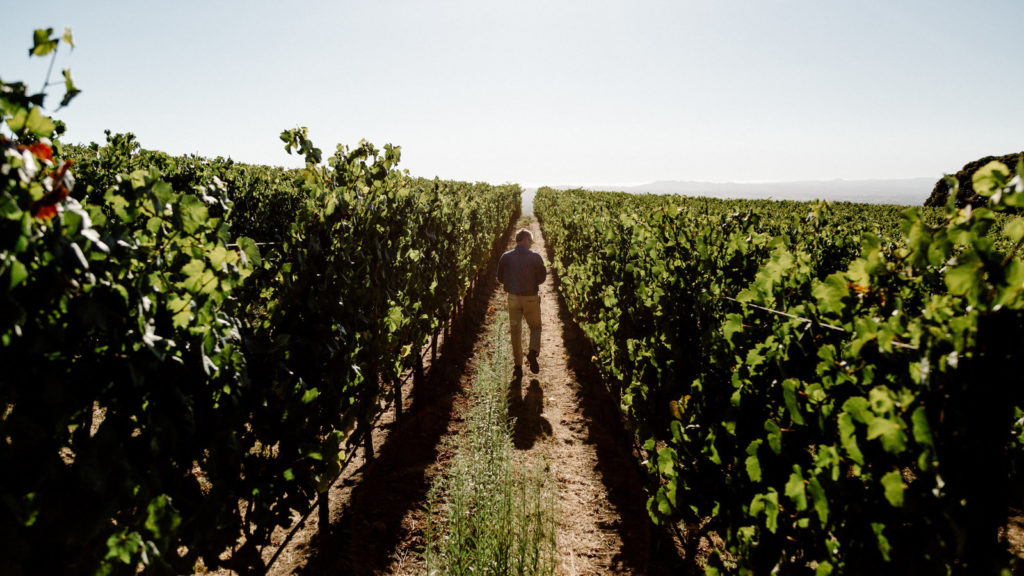
The cost of growing grapes in Northern California is predicted to be about $11,000 per acre, but by the end of the century, this will increase to $1 million per acre. With a total investment of $560,894, the cost to construct the wineries varied from $560,894 for a 2,000 case winery to $2,339,108 for a 20,000 case winery.
Is it profitable to grow wine grapes?
A farmer may be certain that he can produce a yield of 5 tons of fruit of excellent quality, sell it for $3,000 per ton, and make $15,000 per acre.
Grapes may be produced and sold profitably if output is stable and demand is strong. One acre of grapes may be grown for around $8,000 over the course of three years (excluding land and equipment expenditures).
How much time is required to create a vineyard? Your passion for animals and your technical prowess may be combined in the specialized industry of pet photography, which is both entertaining and lucrative.
The day spa industry has extraordinarily high profit margins due to the hefty beginning expenses. Large spas that provide more expensive amenities and services, such saunas and mud baths, can generate significant revenue.
It appears that many grape producers are implementing a new price strategy to survive. This strategy enables producers to swiftly repay their investment since it produces 5 tons of fruit at a gross profit of $15,000 per acre. Because their prices are greater, bigger wineries could find it difficult to compete with smaller ones.
What Are The Costs Involved In Growing Grapes?
Over a three-year period, planting land can cost anywhere between $30,000 and $100,000 per acre, with really steep slopes costing as much as $200,000 per acre.
What Amount Of Wine Can One Acre Of Grapes Produce?
The quantity of grapes utilized produces around 720 bottles, or 60 cases, of wine. An acre with a yield of 10 tons produces 600 cases, or 7,200 bottles, whereas a vineyard with a low yield produces 120 cases, or 1,440 bottles.
How many acres are required for wine production?
Only a 5-acre property should be required if you wish to launch a successful firm. You’ll gain from that if you’re selling straight to customers. To make it lucrative to sell wholesale, you’ll need at least 10 acres, but ideally more.
FAQs
1. How much wine can you make from a ton of grapes?
A ton of grapes (2,000 pounds) will yield 756 bottles of wine, which is enough to fill 2.5 barrels. About 25 cases of wine can fit into a barrel, so our typical barrels hold about 300 bottles total.
2. How far apart are wine grapes planted?
In most cases, nine to ten feet between rows is sufficient, although divided training systems (like the Geneva Double Curtain) and steep slopes may require 11 or even 12 feet between rows. In general, yield per acre declines when row spacing widens.
3. How many grapes make up a ton?
For example, 7,200 grape clusters or 432,000 to 576,000 individual grapes are produced from each ton of grapes, or around 720 bottles.
4. Which nation’s vineyards cover the most land?
The largest vineyard area in the world is found in Spain. Despite this, Spain produces substantially less wine overall due to poorer wine yields than its neighbors France and Italy.
5. How much wine can you make from 1 kilogram of grapes?
Using a kilogram of grapes as an example, 70 milliliters of wine will be produced.
6. What size vineyard must have to be considered?
The bare minimum size required to start a successful firm is 5 acres. And that only applies if you sell your wine directly to customers. You will need at least 10 acres to sell to the wholesale market in order to be profitable, but ideally more to take advantage of economies of scale.
7. Which land would be ideal for a vineyard?
The land should face south in order to receive the most sunshine. Avoid locations that are overly exposed or elevated since these factors affect vineyard temperatures, canopies, and flowering. On the other hand, a mild wind can reduce the pressure from sickness.
8. How profitable is a vineyard?
How successful are wineries? An average winery produces between $80-100k in profit annually. But there are lots of things that affect profitability. One of the most important influencing elements is size.
Conclusion
Determining how many wine grape vines per acre is a crucial consideration for vineyard owners and wine enthusiasts alike. Throughout this guide, we have explored the factors that influence vine spacing decisions, such as grape variety, rootstock, climate, and vineyard management practices.
By understanding these factors and considering the specific objectives of your vineyard, you can make informed choices regarding vine density.
Take this knowledge, combine it with your passion for wine, and let it guide you as you determine the ideal number of wine grape vines per acre for your vineyard. Cheers to a fruitful and bountiful harvest!

With over a decade of experience in viticulture, Simon Conner is the perfect writer to help you find and maintain your prized vintages. As an expert on food, wine, and kitchen products, he offers his expertise to guide clients through every step involved with collecting and selling wines.
